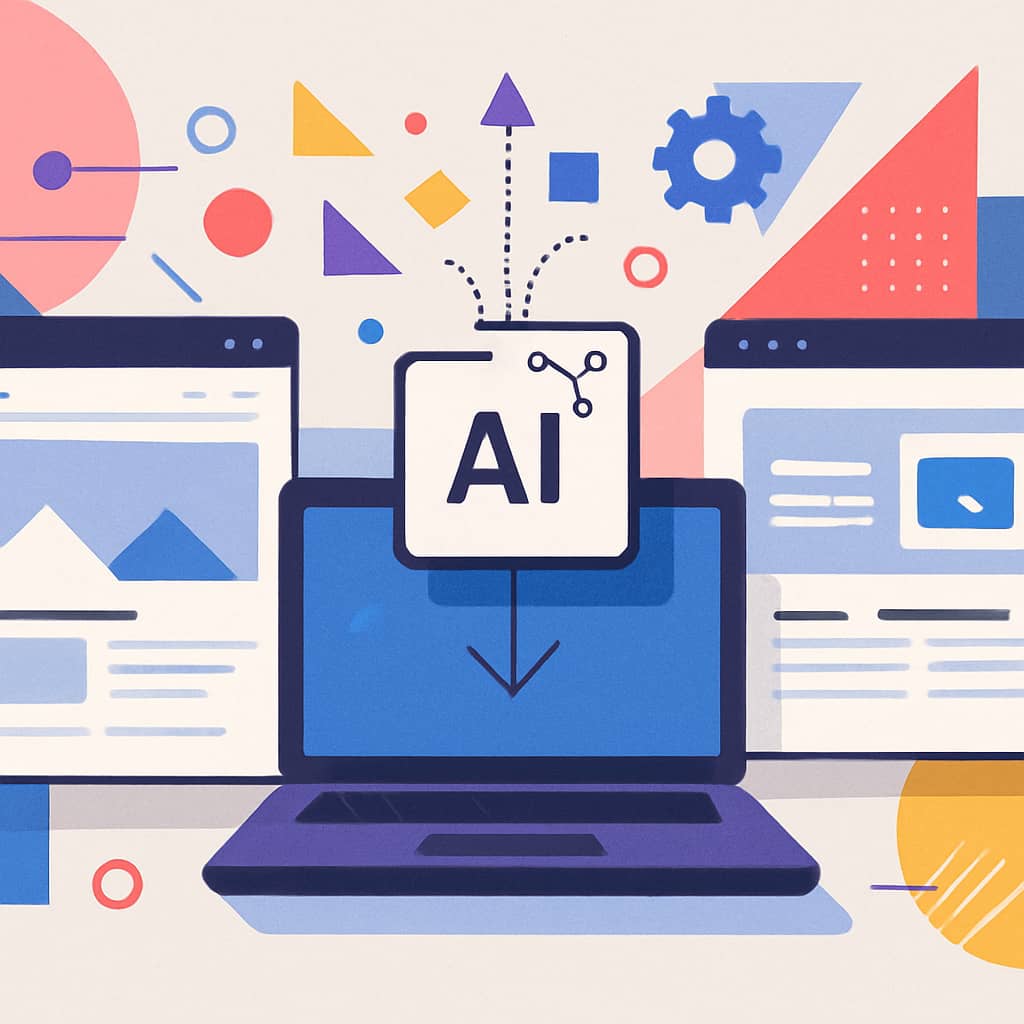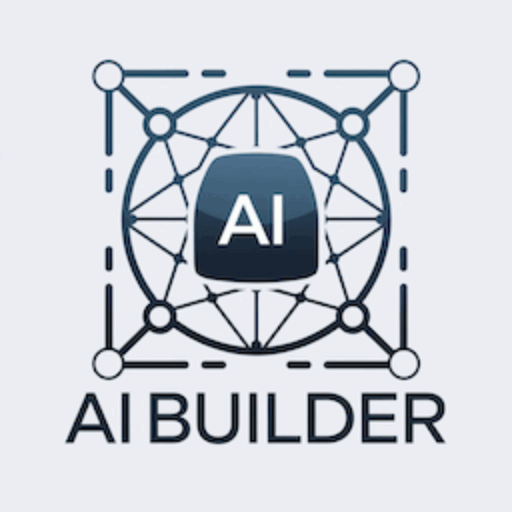How AI is revolutionizing web design workflows and what it means for WordPress users in 2025 and beyond.
The landscape of web design is undergoing a seismic shift. Artificial intelligence is no longer a futuristic concept—it’s actively reshaping how websites are conceived, designed, and deployed. At the heart of this transformation lies generative design, a paradigm where algorithms create design solutions based on parameters and goals rather than manual pixel-pushing.
For WordPress users—freelancers, agencies, marketers, and entrepreneurs—this evolution presents both opportunity and challenge. Understanding generative design and how to leverage it effectively can mean the difference between staying competitive and falling behind in an increasingly automated industry.

The Rise of Generative Design
Gartner’s research paints a striking picture of the near future: by 2026, AI will automate 60% of the design effort for new websites and mobile applications. Even more remarkably, by 2027, nearly 15% of applications will be generated entirely without human intervention in the design loop.
These aren’t incremental improvements—they represent a fundamental reimagining of the design process. Generative design systems analyze vast datasets of successful designs, user behavior patterns, and aesthetic principles to produce layouts, color schemes, typography hierarchies, and component arrangements that would traditionally require hours or days of human effort.
The implications are profound. Design agencies can prototype concepts in minutes rather than weeks. Solo freelancers gain capabilities previously reserved for large teams. Marketing departments can test dozens of landing page variations without exhausting their design budget. The democratization of professional design is no longer theoretical—it’s happening now.
Benefits for WordPress Users
WordPress, powering over 43% of all websites, sits at the intersection of accessibility and professional capability. Generative design tools built for WordPress—like AI Builder—bring enterprise-level automation to users at every skill level.
Intelligent Layout Generation
Modern generative design systems understand compositional principles that took human designers years to master. They know that hero sections need strong visual hierarchy, that three-column layouts work better for feature comparisons than four, and that white space isn’t wasted space—it’s essential breathing room.
When you prompt AI Builder to create a landing page for a SaaS product, it doesn’t just throw blocks on a page. It structures content logically: value proposition above the fold, social proof strategically placed, feature explanations with scannable formatting, and CTAs positioned where conversion data suggests they perform best.
Sophisticated Color Theory
Color selection is where many DIY websites falter. Generative design systems apply color theory automatically—complementary schemes for energy, analogous palettes for harmony, monochromatic approaches for elegance. They ensure sufficient contrast for accessibility (meeting WCAG standards), avoid color combinations that clash or create visual fatigue, and maintain brand consistency across all generated elements.
AI Builder reads your existing brand colors and extends them intelligently. If your primary color is a vibrant blue, it generates complementary accent colors, appropriate neutral tones, and semantic colors for success/warning/error states that feel cohesive rather than arbitrary.
Typography That Communicates
Typography is communication design. Generative systems understand this implicitly. They establish clear hierarchies with appropriate size scales, select font pairings that complement rather than compete, set line heights and letter spacing for optimal readability, and adjust typography responsively for different screen sizes.
The result? Text that doesn’t just exist on the page but guides the reader’s eye, emphasizes key messages, and creates visual rhythm that makes content feel professional and intentional.
Workflow Tips: Iterating on AI-Generated Designs
Generative design is powerful, but it’s not magic. The most successful implementations treat AI output as a sophisticated starting point rather than a finished product. Here’s how to maximize the value of AI-generated designs while maintaining quality and brand integrity.
Review and Refine CSS
AI-generated CSS is typically clean and functional, but it may not perfectly match your brand’s nuances. Inspect the generated styles and adjust spacing to match your design system’s scale, fine-tune colors to exact brand specifications, modify animation timing for your preferred feel, and ensure responsive breakpoints align with your target devices.
WordPress’s native Gutenberg editor makes this process straightforward. You can adjust block-level styles visually or dive into custom CSS for precise control. The key is treating the AI output as a foundation that accelerates your work rather than constrains it.
Ensure Accessibility
While AI systems increasingly incorporate accessibility principles, human verification remains essential. Check color contrast ratios with tools like WebAIM’s contrast checker, verify keyboard navigation flows logically through interactive elements, ensure all images have meaningful alt text, and test with screen readers to confirm content makes sense when read aloud.
Accessibility isn’t just ethical—it’s practical. Accessible sites perform better in search rankings, reach wider audiences, and demonstrate professionalism that builds trust.
Test Responsiveness Rigorously
Generative design systems produce responsive layouts, but real-world device diversity demands thorough testing. View your site on actual mobile devices, not just browser emulators. Test on tablets in both orientations. Check ultra-wide desktop monitors. Verify that touch targets are appropriately sized for mobile interaction and that content reflows gracefully at every breakpoint.
With over 60% of web traffic coming from mobile devices, responsive design isn’t optional—it’s foundational. AI gives you a head start, but your testing ensures the experience is genuinely excellent across all contexts.
Embrace Human Creativity
This is perhaps the most important principle: AI-generated designs provide structure and efficiency, but human creativity provides soul. Use the time AI saves you to focus on what machines can’t replicate—understanding your audience’s emotional needs, crafting messaging that resonates with your specific community, making bold creative choices that differentiate your brand, and telling stories that connect on a human level.
The best websites in the AI era won’t be those that are entirely AI-generated or entirely hand-crafted. They’ll be those that leverage AI for speed and consistency while channeling human insight into the decisions that truly matter.
Future Possibilities
The current state of generative design is impressive, but it’s merely the foundation for what’s coming. Several emerging trends point toward even more sophisticated automation.
Design System Integration
Imagine AI that doesn’t just generate individual pages but maintains consistency across your entire digital ecosystem. Future systems will ingest your complete design system—component libraries, spacing scales, color palettes, typography rules—and generate new pages that feel like natural extensions of your existing work. Every button, form, card, and navigation element will automatically conform to your established patterns.
Style Guide Automation
Rather than manually documenting design decisions, AI will generate comprehensive style guides automatically. As you build and refine your site, the system will extract patterns, document component usage, and create living style guides that update in real-time. This documentation becomes the foundation for consistent expansion and team collaboration.
Headless Framework Integration
WordPress is increasingly used as a headless CMS, with content managed in WordPress but rendered through modern JavaScript frameworks like Next.js or Gatsby. Future generative design tools will bridge this gap seamlessly, generating not just WordPress blocks but also the corresponding React components, API integrations, and deployment configurations needed for headless architectures.
This means you could design in WordPress’s familiar interface while automatically generating production-ready code for high-performance, globally distributed web applications.
Fully Automated Site Production
Gartner’s prediction of 15% of applications being generated without human intervention by 2027 points toward a future where entire websites can be produced from high-level business requirements. Describe your business model, target audience, and key objectives, and AI generates a complete site—content, design, functionality, and optimization—ready for review and deployment.
This doesn’t eliminate the need for designers and developers—it elevates their role. Instead of building from scratch, professionals become curators, strategists, and refiners, focusing on the high-value decisions that differentiate exceptional digital experiences from merely functional ones.
Conclusion: Designing the Future
Generative design represents more than technological advancement—it’s a fundamental shift in how we approach web creation. By automating the mechanical aspects of design, AI frees us to focus on what truly matters: understanding our audiences, crafting compelling narratives, and building digital experiences that genuinely serve human needs.
For WordPress users, this evolution is particularly exciting. The platform’s combination of accessibility and extensibility makes it the ideal environment for generative design tools. Whether you’re a solo freelancer competing with agencies, a marketing team managing dozens of landing pages, or an enterprise maintaining complex digital ecosystems, AI-powered design automation levels the playing field and accelerates your capabilities.
The future of web design isn’t human versus machine—it’s human and machine, each contributing what they do best. AI handles the heavy lifting of layout, color theory, and responsive implementation. Humans provide strategy, creativity, and the nuanced understanding of context that transforms functional websites into memorable digital experiences. Together, we’re not just building websites faster—we’re building better websites, more accessible websites, and websites that truly serve their purpose in an increasingly digital world.
